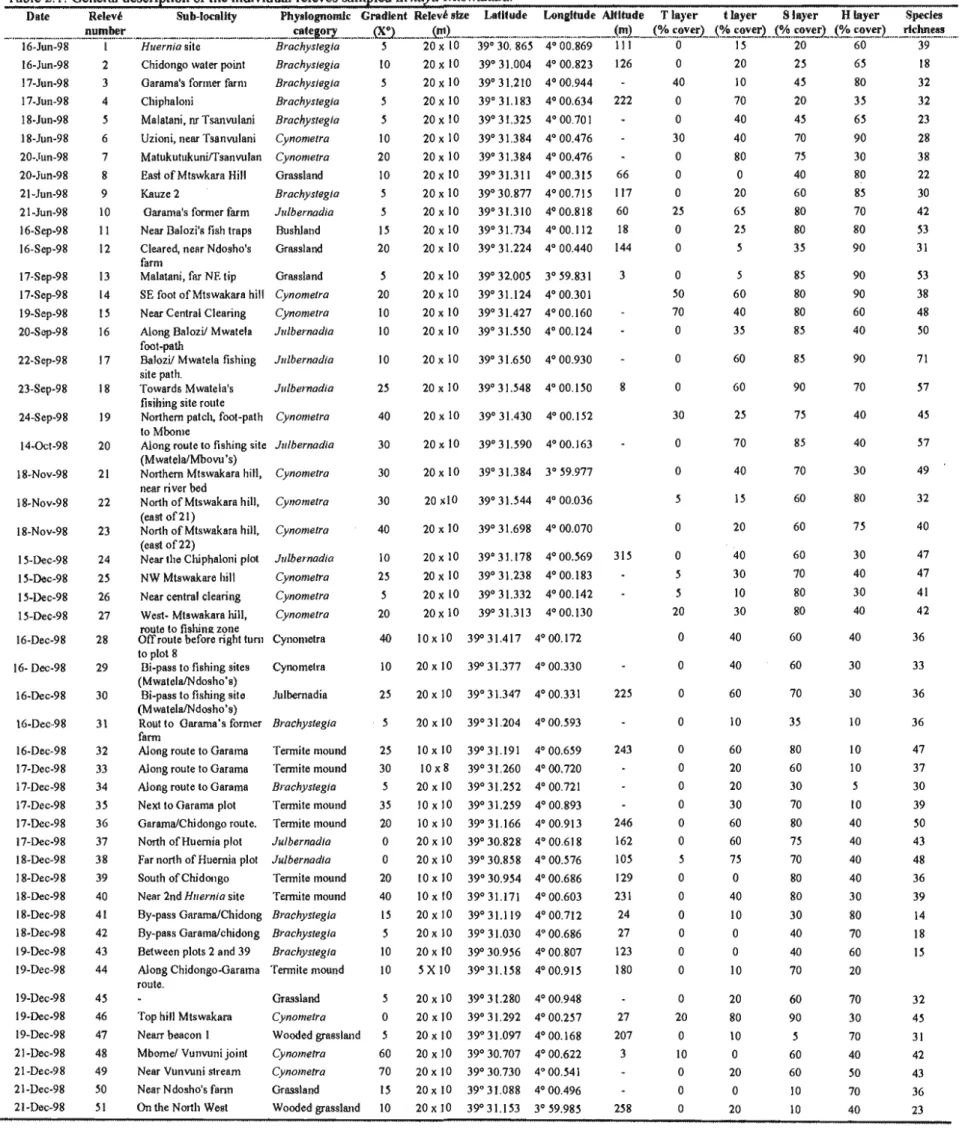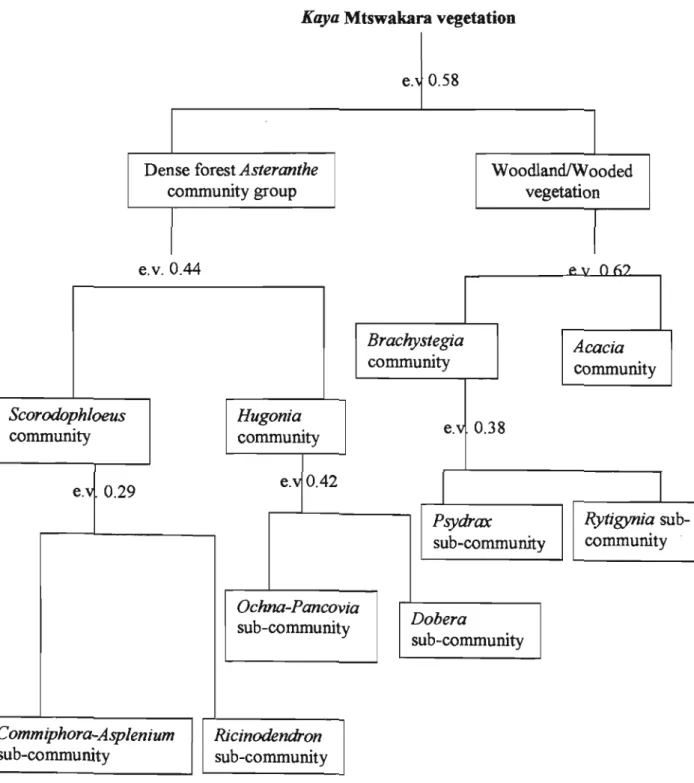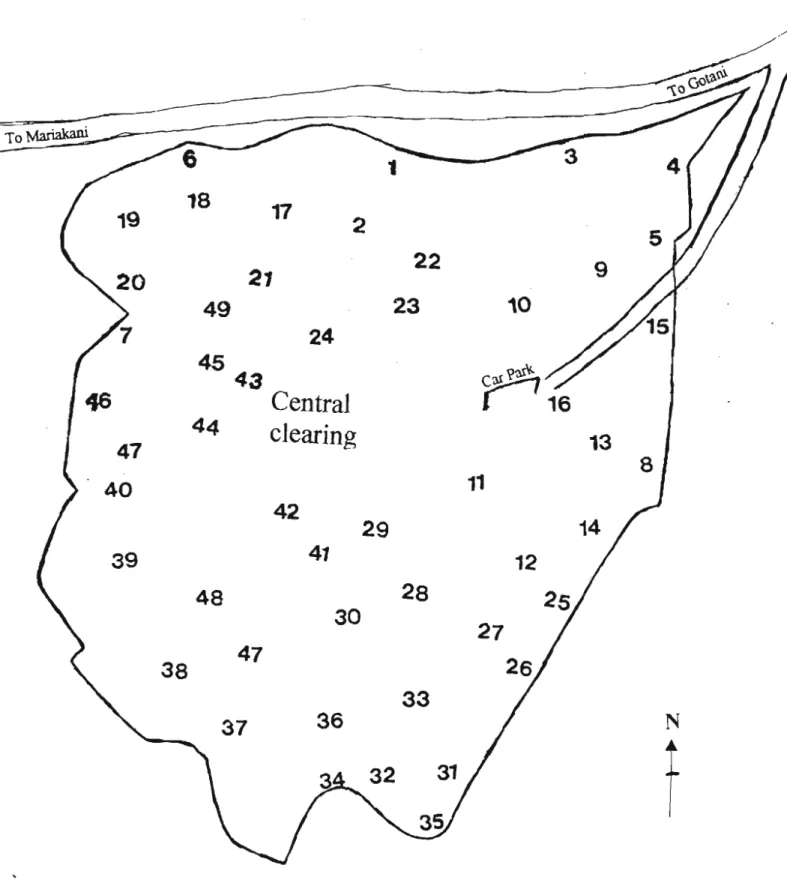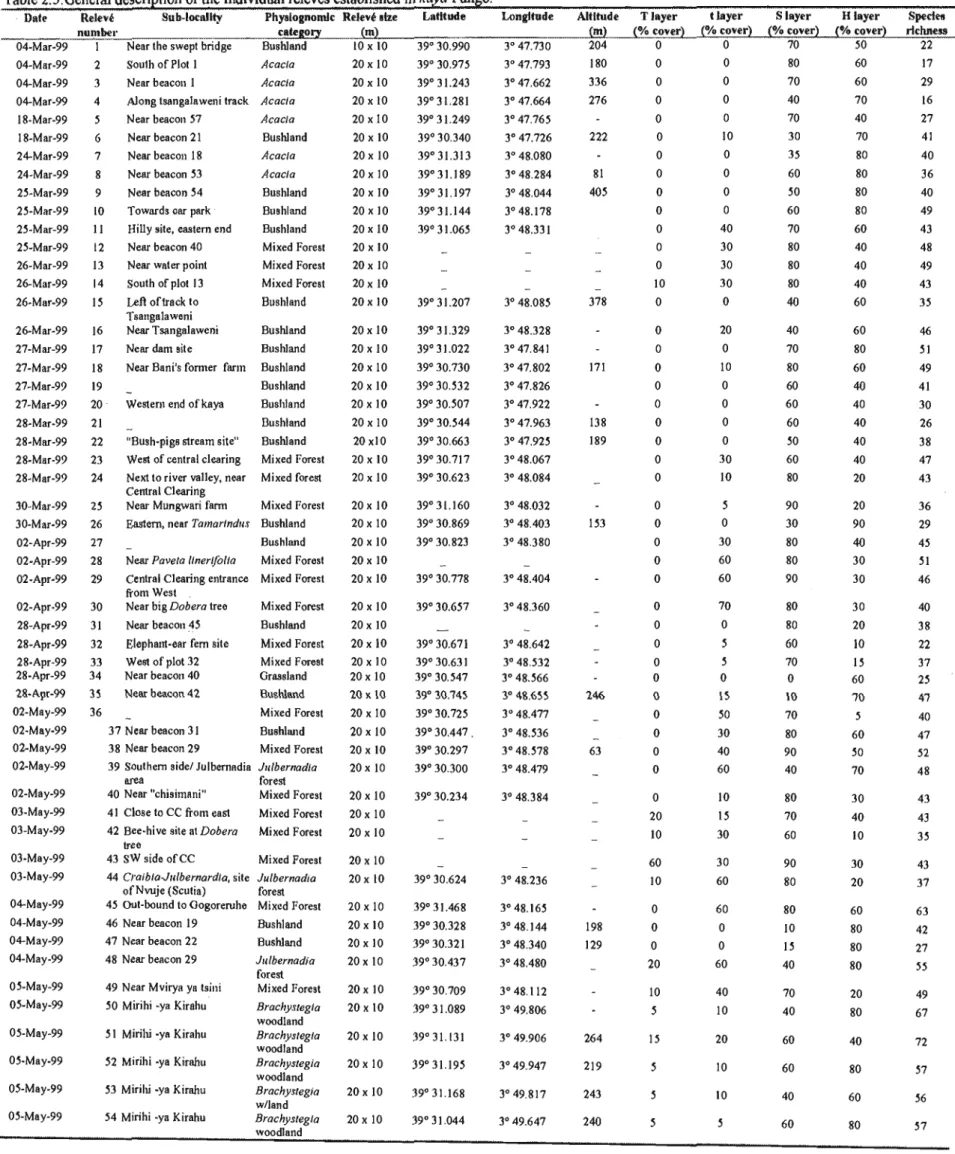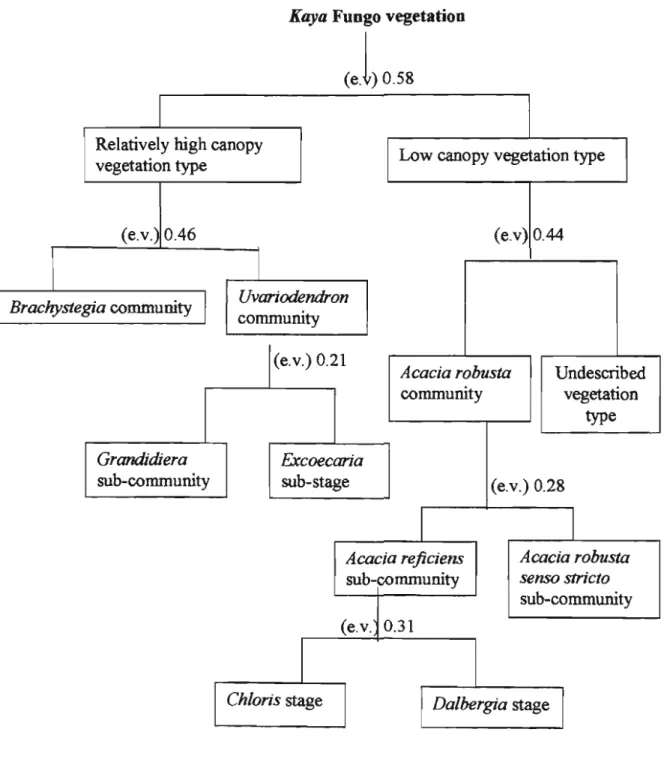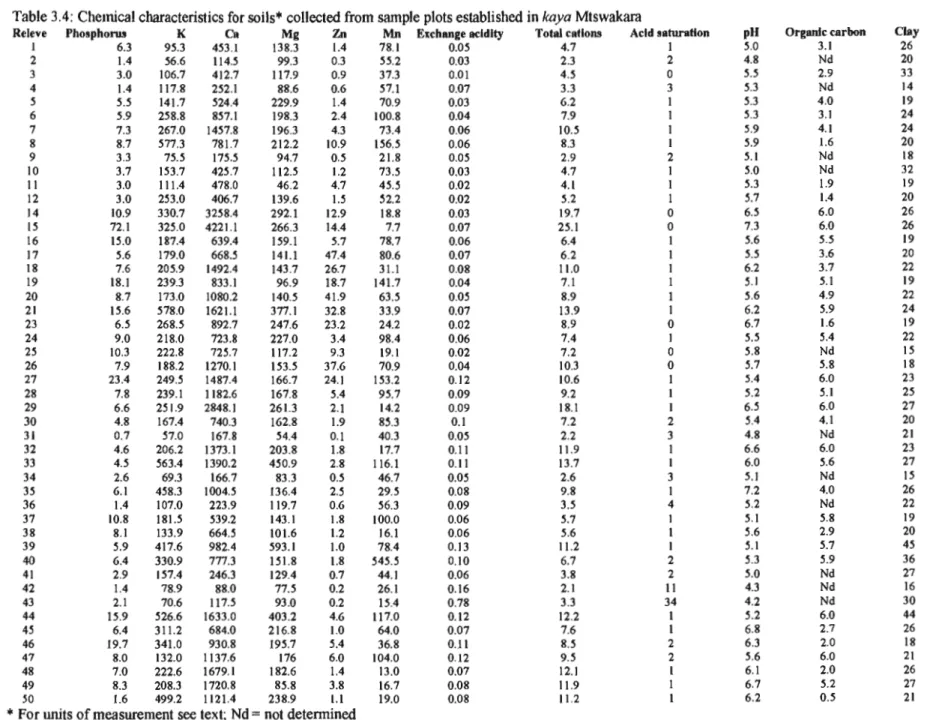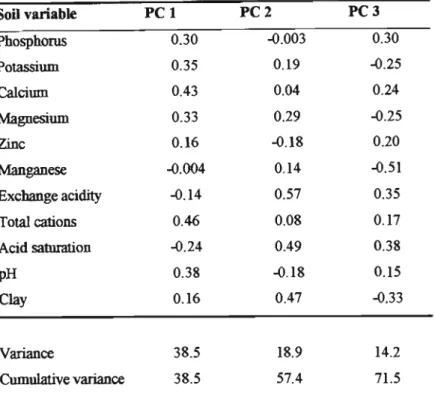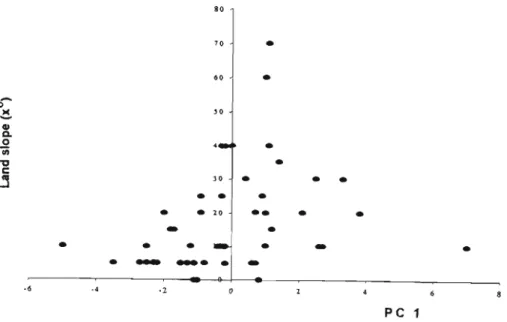General description of individual relevant sampled in kaya Mtswakara TWINSP AN classification table for the relatively common plant species recorded in the releves sampled in kaya Mtswakara. General description of individual relevant sampled in kaya Fungo TWINSP AN classification table for the relatively common plant species recorded in the releves sampled in kaya Fungo. Correlation matrix between variables (soil variables and slope) for the soil samples collected from sample plots established in kaya Mtswakara 88 Physical characteristic of soils in the individual releves sampled in kaya.
A summary of the main soil variables based on the texture-color description of soil from kaya Fungo (mean values and standard .. deviation in parentheses~ and modal category for leaf litter) 125 Table 3.16 Comparison of soil data from the kayas Mtswakara and Fungo to critical. Frequency of species used for trellis in (10 x 20rn) blocks (n=30) in three transects, and the number of harvestable poles (in 0.6 ha) of.
PAGE
A sketch map of kaya Fungo showing the approximate positions of releves sampled in the kaya. Soil variables plotted in the PCA space defined by the first and second Principal Components (for soils collected from kaya Mtswakara) 81 Soil variables plotted in the PCA space defined by the first and third. Principal components (for soils collected from kaya Mtswakara) 81 Ordinance of soil texture in the PCA space defined by the first and second Principal components (for soils collected from kaya Mtswakara) 83 Ordination of clay content in the PCA space defined by the first and second Principal Components (for soil collected from kaya Mtswakara) 83 Ordinance of soil surface litter in the PCA space defined by the first and second Principal Components, for soil collected from kaya Mtswakara 84.
Ordination of soil variables in the PCA space defined by the first and second principal components (for soil collected from kaya fungus) 106 Ordination of soil variables in the PCA space defined by the first. Component for vegetation and soil data collected from kaya Mtswakara 136. Ordination of sample plots with respect to soil chemical variables in the PCA space defined by the first and second principal components. 144 Vegetation cover changes in the herbaceous layer along the first principal component, for vegetation and soil data collected from kaya Fungo 144 Releves arranged in PCA space defined by the first and second principal components, in relation to soil chemical variables (vegetation and soil .data collected from kaya Fungo) 148.
Kaya Fungo vegetation types plotted in the PCA space defined by the first and second principal components. Appendix ID: TWINSP AN classification table for all species recorded in Releves sampled in kaya Fungo.
CHAPTER ONE
GENERAL INTRODUCTION
However, Dale (1939) and Moomaw (1960) were the first to examine the floristic patterns of Kenya's coastal forests. In Kenya, remnants of the 'ancient coastal forest' include sacred forest areas (ka}us) spread over a 250 km South-North stretch, which in addition to their cultural significance are biologically rich (Robertson & Luke, 1993). . More than half of Kenya's rare plant species are found in the Coast region, with many occurring in kaya forests (Robertson & Luke, 1993).
Destruction and destruction of kaya forests began to be experienced at an alarming rate. Based on the above, to recommend management options for the use and conservation of kaya forests in the longer term. In the second chapter there is a phytosociological classification of vegetation in two cases.
In Chapter Seven, based on the resuhs in the preceding chapters, the future prospects of the kayas are examined. Kaya Fungo, also known as kaya Giriama, is the primary kaya of the Giriama community.
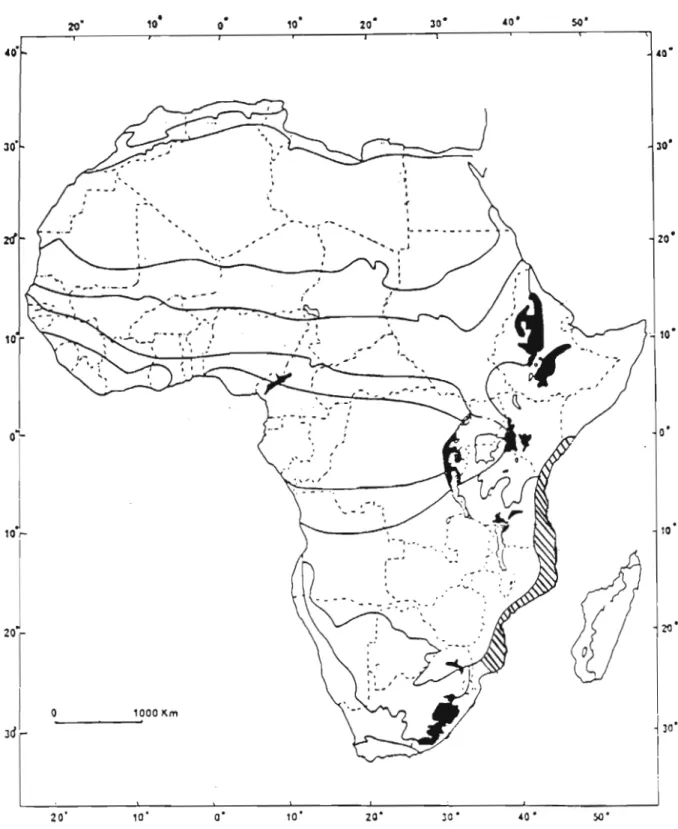
CHAPTER TWO
PLANT COMMUNITIES IN KAYA FORESTS
In the entire vegetation data set (Appendix IT) about 3% of species were generalists, occurring in 51–75% of reliefs. In the relatively undisturbed areas of the Asteranthe community group, the vegetation cover was quite dense with four distinct vegetation types. Julbemardia vegetation was found in the northeastern, southwestern and central parts of the kaya.
Species recorded in the shrub layer included young individuals of the short tree layer, a variety of shrub species (including the invasive Thespesia danis) and climbing species. A common observation in termite mound areas was the extraction of wood, which particularly disturbed C. The indicative species of the Acacia community were: Acacia etbaica, Grewia plagiophylla and Hoslundia opposita.
Low layer cover of short trees and shrubs was recorded in the subcommunities of the Acacia robusta community. Part of the sub-stage Excoecaria (in Fungo cay), in which the dominance of climbing species has a restraining effect on the herbaceous layer (Photo taken in April 1999). The dense canopy forest areas in the two cays showed considerable similarity, with most floristic elements shared.
The change in topography is probably one of the main causes leading to variations in the floristic composition in the two kayas. Also a higher species richness was recorded in Mtswakara kaya (Ochna-Pancovia sub-community) than in Fungo kaya, although in most vegetation types, species richness was almost the same in both cayas. Most of the taxa recorded in the dense forest communities of the two cays were common, but some were not.
In the south, a wide swathe of forest extends from north of Bamba to Gotani (near Kaya Fungo), at Sokoke Forest, in Mwache Forest (near Kaya Mtswakara), on the slopes of the Shimba Hills and the Dzombo Hill (Moomaw 1960). . The floristic aspects of the Acacia community identified in kaya Fungo were consistent with the Acacia-Euphorbia (Acacia Thorn-bushland) described by Moomaw (1960).
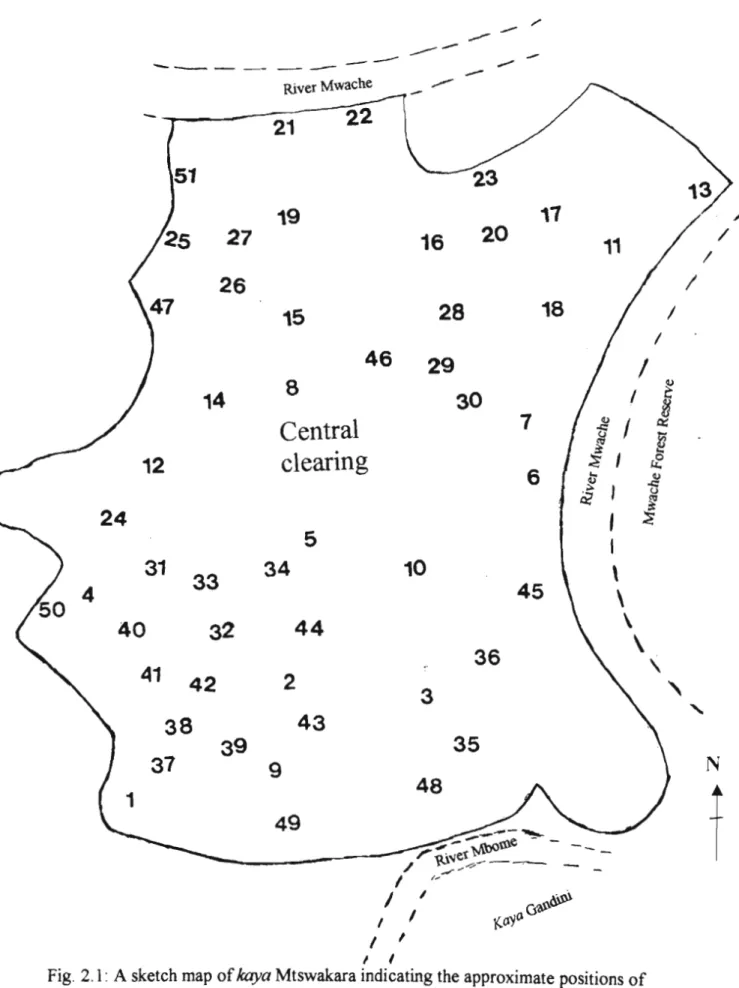
CHAPTER THREE
SOILS OF THE KAYA FORESTS
A big tree had fallen. 26 Cynometra Sand Sand Black Abundant Scorodophloeus fischeri cut (for poles) 27 Cynometra Sand Pale Black Abundant S. These samples (14, 15 and 29) were collected from levels sampled in densely forested areas relatively undisturbed with gentle slopes (10-20 °), and were characterized by sandy-loam soil.
Wooded grassland Sandy loam Light gray Thin The area borders a freshly burned site and signs of grazing have been noted. 4 Acacia thickets Sandy loam Light gray Absent The area was burned, shrub species sprouted. 6 Wooded grassland Sandy loam Light gray Sparse Area was highly disturbed and subjected to grazing.
11 Wooded grassland Sand-clay Pale gray Ablmdant A raised site (possibly a termite mound), next to a fresh buml area. 16 Wooded Grassland Sandy Soil Pale Gray Sparse Some youth grazed their livestock in the neighborhood (within the kaya area). 17 Wooded grasslands Sandy soil Pale gray Abundant Most herbaceous plants had died due to drought.
18 Wooded grasslands Sandy clay Pale gray Sparse Test plot was next to (Kabanis) abandoned fium. 37 Wooded grasslands Sandy soil Pale gray Sparse Tree species that have not been cut and/or removed. 46 Wooded grassland Sandy-clay Pale gray Absent Burning and grazing sing noted, shrub species were sprouts of buml plants.
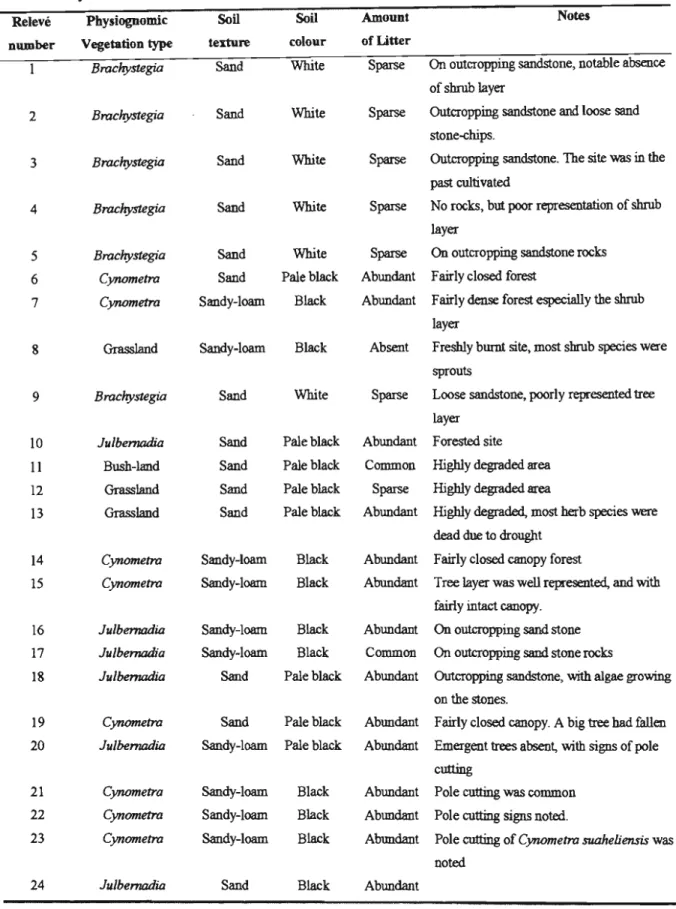
CHAPTER FOUR
VEGETATION-ENVIRONMENT RELATIONSHIPS WITH PARTICULAR REFERENCE TO SOILS
MATERIALS AND METHODS
- Vegetation-environment relationships in Mtswakara
Vegetation types identified in the TWINSP AN classification in Chapter Two were related to the soil environmental gradients (pC axes) discussed in Chapter Three. Mean values of each variable in the vegetation types were compared using ANOV A and the Scheffe test (Sokal & Rohlf 1981) for normally distributed data, and the Kruskal-Wallis test (Sokal & Rohlf 1981) for non-normally distributed data. -is not distributed. Considering that the first axis (pC 1) in the PCA described most of the variance in the soil data (Table 3.5), descriptive characteristics of the vegetation along that axis were investigated.
This suggests that increases in soil fertility only correspond to increases in vegetation cover in the emergent and shrub layers. The vegetation types in the PCA hyperspace indicated that the Scorodophloeus community (RicinodendTon and Commiphora-Asplenium subcommunities) is on relatively fertile soils and the Brachystegia community (Psydrax and Rytigynia subcommunities) is on relatively infertile soils (Fig. 4.7). In the PCA hyperspace, the vegetation types were thus separated along soil fertility gradients, where the dense forest Scorodophloeus community was on the most fertile soils, the woodland Brachystegia community on the least fertile soils.
There was considerable inter-sample variation in the Psydrax sub-community, as indicated by the high standard deviation values of the means. The mean values of the Brachystegia community discussed above correspond to the ordination in the PCA that projected that community (Rytigynia and Psydrax subcommunities) as a vegetation type occurring on low-fertility and high-acid soils. 34;'For units of the soil variables see text;The means in the columns followed by different letters (a,b,c) are significantly different with a Sheffe multiple range test (for normally distributed data) or Mann-Whitney test (for data which is not normally distributed).
However, the significant variation in the soil variables associated with the hill vegetation (Dobera sub-community) must be taken into account. The soils in the Acacia community, compared to the other communities, generally had moderate fertility and acidity (Table 4.6). In kaya Mtswakara, the main soil division in the PCA ordination corresponded to the second division of the TWINSP AN vegetation classification, with the Brachystegia community separated from the other vegetation types.
In Kaya Fungo, the main soil division in the PCA ordination corresponded to the third vegetation classification in the TWINSP AN. In kaya Fungo, Combretum schumannii (plate 4.3) and Milicia excelsa (plate 4.4) were heavily extracted in the past. It was therefore difficult to draw conclusions about the effects of grazing in the kayas.
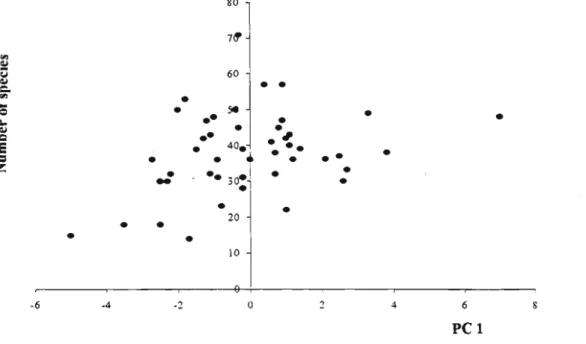
CHAPTER FIVE
